What is Endoplasmic Reticulum ?
Endoplasmic Reticulum Definition
Endoplasmic Reticulum (ER) is a system of membranes that extends throughout the cytoplasm of plant and animal cells forming interconnected tubes and flattened sacs (cisternae). It links many parts of the cell including the plasma and nuclear membranes.
Endoplasmic Reticulum Location
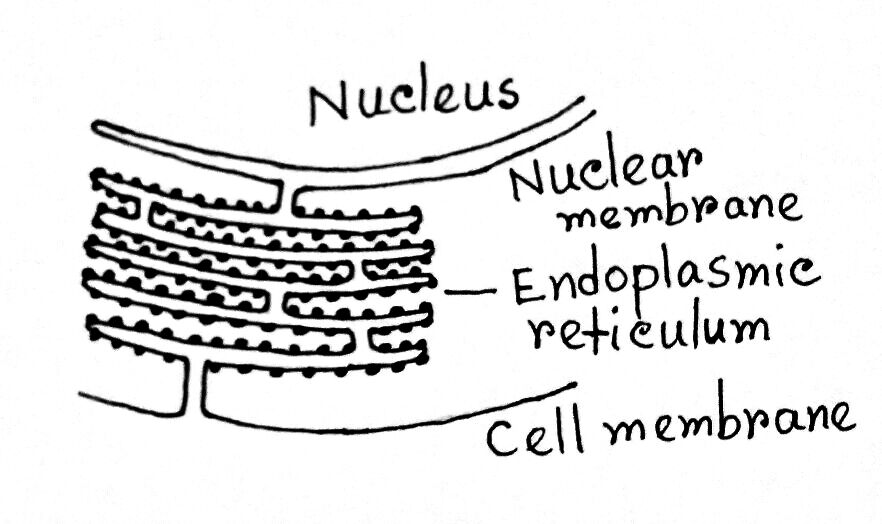
- The Endoplasmic Reticulum is so fine in structure that its existence is revealed only through an electron microscope.
- Endoplasmic Reticulum is an irregular network of double membranes distributed over the entire cytoplasm in a cell.
- At its outer end, the Endoplasmic Reticulum is connected with the cell membrane.
- At its inner end it is connected with the nuclear membrane.
Also Check – What is Cytoplasm?
Endoplasmic Reticulum Structure

- Endoplasmic Reticulum(ER) is a large network of membrane-bound tubes and sheets.
- ER extends from the outer nuclear membrane into the cytoplasm.
- It looks like long tubules round and oblong bags (vesicles).
- The ER membrane is similar in structure to the plasma membrane. It occurs in three forms, i.e. cisternae, vesicles and tubules.
- Endoplasmic Reticulum appears rough when small granules called ribosomes are attached to it and appears smooth without them.
Also Check – Parts of Plant Cell – Location , Structure and Functions
Endoplasmic Reticulum Types
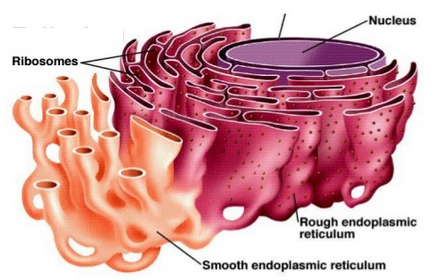
Depending upon nature of its membrane, Endoplasmic Reticulum (ER) is of two types:
2 types of endoplasmic reticulum are-
Rough Endoplasmic Reticulum
Smooth Endoplasmic Reticulum
Rough Endoplasmic Reticulum Definition
Rough Endoplasmic Reticulum (RER) is a type of ER which contains ribosomal particles on its surfaces due to which its surface is rough. The ribosomes are the site of protein synthesis.
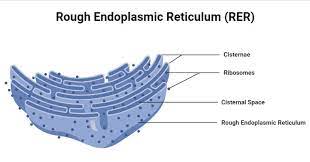
- Rough Endoplasmic Reticulum (RER) is mainly formed of cisternae.
- Newly synthesized proteins enter the interior lumen where they are sorted, chemically modified and folded to attain their tertiary structure, and tagged with a localization signal (‘address’) that determines their destination.
- The proteins are then enclosed in vesicles, which pinch off from the surface of the Rough Endoplasmic Reticulum to be transported to the *Golgi apparatus for further processing.
- Membrane proteins and lipids are made in the Rough Endoplasmic Reticulum(RER) and are integrated into the ER membrane in situ to produce new membrane.
Smooth Endoplasmic Reticulum Definition
Smooth Endoplasmic Reticulum (SER), which is continuous with Rough Endoplasmic Reticulum (RER), lacks ribosomes; it is the site of important metabolic reactions, including further protein modification of proteins, synthesis of phospholipids, fatty acids, and steroids, and the breakdown of glycogen(in certain animal cells).
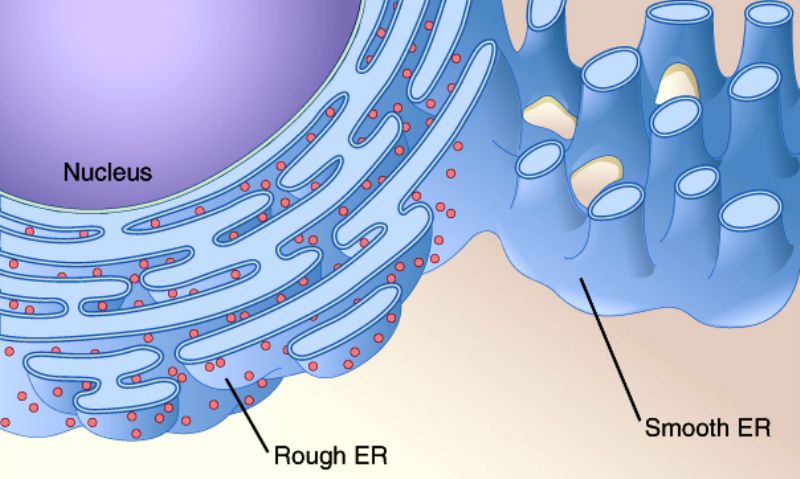
- Smooth Endoplasmic Reticulum (SER) forms a network system of vesicles and tubules and forms a Cytoskeleton in Cytoplasm.
- Smooth Endoplasmic Reticulum (SER) surface is smooth due to the absence of ribosomes.It is formed of vesicles and tubules.
Endoplasmic Reticulum appears in varying forms in different cells.
11 Important Functions of Endoplasmic Reticulum
- The Endoplasmic Reticulum (ER) is the site of protein synthesis and modification, and also the synthesis of lipids for new membranes.
- It forms the supporting framework of the cell and also serves as a pathway for the distribution of the materials from one part of the cell to the other.
- Ribosomes present in all active cells act as sites for protein synthesis. Proteins manufactured here are transported throughout the cell by Endoplasmic Reticulum. Read More ….
Also Check – 6 Important Difference between Rough and Smooth Endoplasmic Reticulum
Also Check – 7 Difference Between Mitochondria and Endoplasmic Reticulum
Also Check – 11 Important Functions of Endoplasmic Reticulum (ER) Class 9
Also Check – 16 Important Differences between Prokaryotic and Eukaryotic cell
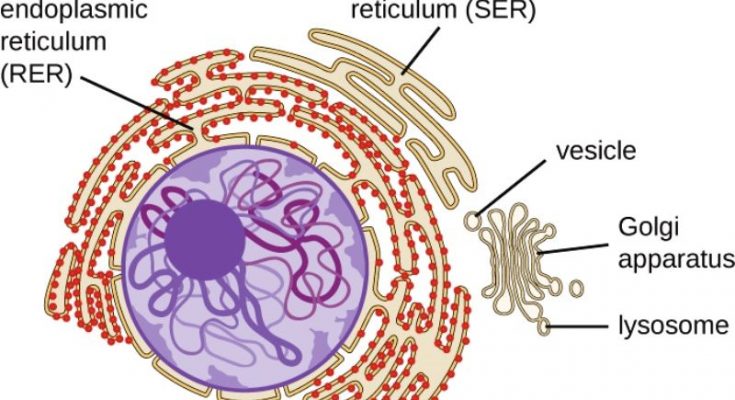
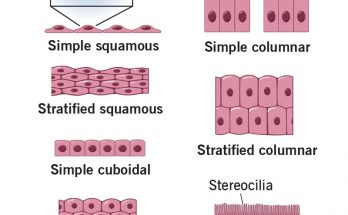
12 Comments on “Endoplasmic Reticulum Class 9 – Definition , Location , Structure , 2 Types and Functions”